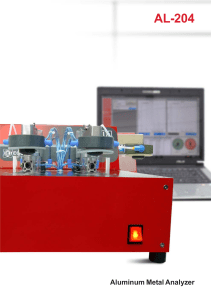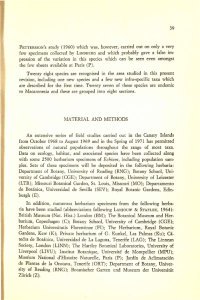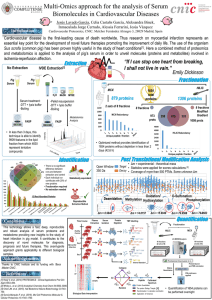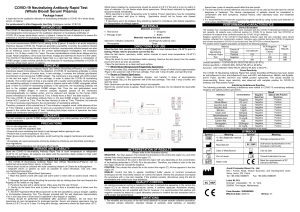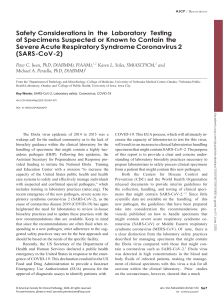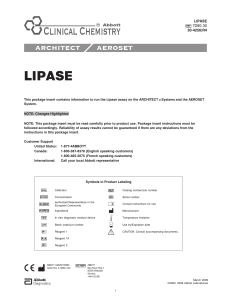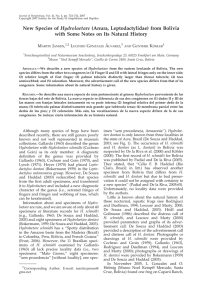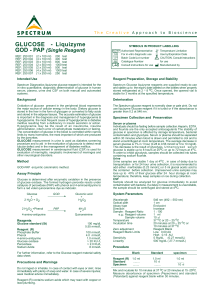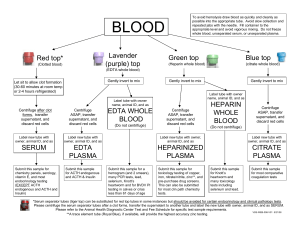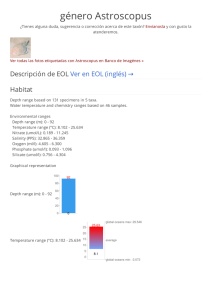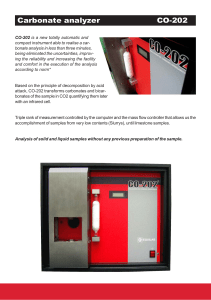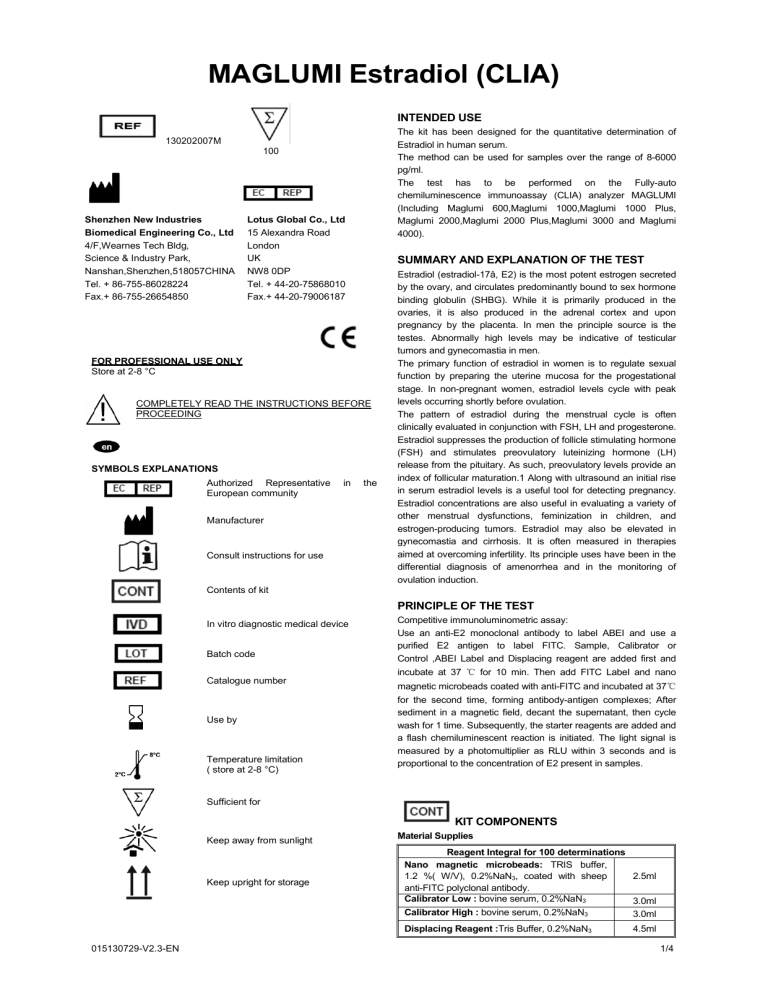
MAGLUMI Estradiol (CLIA) INTENDED USE The kit has been designed for the quantitative determination of Estradiol in human serum. The method can be used for samples over the range of 8-6000 pg/ml. The test has to be performed on the Fully-auto chemiluminescence immunoassay (CLIA) analyzer MAGLUMI (Including Maglumi 600,Maglumi 1000,Maglumi 1000 Plus, Maglumi 2000,Maglumi 2000 Plus,Maglumi 3000 and Maglumi 4000). 130202007M 100 Shenzhen New Industries Biomedical Engineering Co., Ltd 4/F,Wearnes Tech Bldg, Science & Industry Park, Nanshan,Shenzhen,518057CHINA Tel. + 86-755-86028224 Fax.+ 86-755-26654850 Lotus Global Co., Ltd 15 Alexandra Road London UK NW8 0DP Tel. + 44-20-75868010 Fax.+ 44-20-79006187 SUMMARY AND EXPLANATION OF THE TEST FOR PROFESSIONAL USE ONLY Store at 2-8 °C COMPLETELY READ THE INSTRUCTIONS BEFORE PROCEEDING SYMBOLS EXPLANATIONS Authorized Representative European community in Manufacturer Consult instructions for use the Estradiol (estradiol-17â, E2) is the most potent estrogen secreted by the ovary, and circulates predominantly bound to sex hormone binding globulin (SHBG). While it is primarily produced in the ovaries, it is also produced in the adrenal cortex and upon pregnancy by the placenta. In men the principle source is the testes. Abnormally high levels may be indicative of testicular tumors and gynecomastia in men. The primary function of estradiol in women is to regulate sexual function by preparing the uterine mucosa for the progestational stage. In non-pregnant women, estradiol levels cycle with peak levels occurring shortly before ovulation. The pattern of estradiol during the menstrual cycle is often clinically evaluated in conjunction with FSH, LH and progesterone. Estradiol suppresses the production of follicle stimulating hormone (FSH) and stimulates preovulatory luteinizing hormone (LH) release from the pituitary. As such, preovulatory levels provide an index of follicular maturation.1 Along with ultrasound an initial rise in serum estradiol levels is a useful tool for detecting pregnancy. Estradiol concentrations are also useful in evaluating a variety of other menstrual dysfunctions, feminization in children, and estrogen-producing tumors. Estradiol may also be elevated in gynecomastia and cirrhosis. It is often measured in therapies aimed at overcoming infertility. Its principle uses have been in the differential diagnosis of amenorrhea and in the monitoring of ovulation induction. Contents of kit PRINCIPLE OF THE TEST In vitro diagnostic medical device Batch code Competitive immunoluminometric assay: Use an anti-E2 monoclonal antibody to label ABEI and use a purified E2 antigen to label FITC. Sample, Calibrator or Control ,ABEI Label and Displacing reagent are added first and incubate at 37 ℃ for 10 min. Then add FITC Label and nano Catalogue number Use by Temperature limitation ( store at 2-8 °C) magnetic microbeads coated with anti-FITC and incubated at 37℃ for the second time, forming antibody-antigen complexes; After sediment in a magnetic field, decant the supernatant, then cycle wash for 1 time. Subsequently, the starter reagents are added and a flash chemiluminescent reaction is initiated. The light signal is measured by a photomultiplier as RLU within 3 seconds and is proportional to the concentration of E2 present in samples. Sufficient for KIT COMPONENTS Keep away from sunlight Keep upright for storage Material Supplies Reagent Integral for 100 determinations Nano magnetic microbeads: TRIS buffer, 1.2 %( W/V), 0.2%NaN3, coated with sheep 2.5ml anti-FITC polyclonal antibody. Calibrator Low : bovine serum, 0.2%NaN3 3.0ml Calibrator High : bovine serum, 0.2%NaN3 3.0ml Displacing Reagent :Tris Buffer, 0.2%NaN3 015130729-V2.3-EN 4.5ml 1/4 FITC Label: purified E2 antigen labeled FITC, containing BSA, 0.2%NaN3. ABEI Label: anti-E2 monoclonal antibody labeled ABEI, containing BSA, 0.2%NaN3. Diluents :BSA buffer,0.2% NaN3 All reagents are provided ready-to-use. 6.5ml 6.5ml 25ml If controls are beyond the expected range. The room temperature has changed more than 5 ℃ (recommendation). SPECIMEN COLLECTION AND PREPARATION Sample material: serum Collect 5.0ml venous blood into Blood Collection Tube. Standing at room temperature,centrifuging, separating serum part. Reagent Vials in kit box Internal Quality Control: containing BSA, 0.2%NaN3. (target value refer to Quality Control Information date sheet) The serum sample is stable for up to 12 hours at 2-8℃. More than 2.0ml Internal quality control is only applicable with MAGLUMI system. Instructions for use and target value refer to Quality Control Information date sheet. User needs to judge results with their own standards and knowledge. Accessories Required But Not Provided MAGLUMI Reaction Module REF: 630003 MAGLUMI Starter 1+2 REF: 130299004M MAGLUMI Wash Concentrate REF: 130299005M MAGLUMI Light Check REF: 130299006M Please order accessories from SNIBE or our representative. Preparation of the Reagent Integral Before the sealing is removed, gentle and careful horizontal shaking of the Reagent Integral is essential (avoid foam formation!) Remove the sealing and turn the small wheel of the magnetic microbeads compartment to and fro, until the colour of the suspension has changed into brown. Place the Integral into the reagent area and let it stand there for 30 min. During this time, the magnetic microbeads are automatically agitated and completely resuspended. Do not interchange integral component from different reagents or lots! Storage and Stability Sealed: Stored at 2-8℃ until the expiry date. Opened: Stable for 4 weeks. To ensure the best kit performance, it is recommended to place opened kits in the refrigerator if it’s not going to be used on board during the next 12 hours. Keep upright for storage. Keep away from sunlight. CALIBRATION AND TRACEABILITY 1) Traceability To perform an accurate calibration, we have provided the test calibrators standardized against the USP Estradiol Reference Material. 2) 2-Point Recalibration Via the measurement of calibrators, the predefined master curve is adjusted (recalibrated) to a new, instrument-specific measurement level with each calibration. 3) Frequency of Recalibration After each exchange of lot (Reagent Integral or Starter Reagents). Every 2 weeks and/or each time a new Integral is used (recommendation). After each servicing of the Fully-auto chemiluminescence immunoassay (CLIA) analyzer MAGLUMI. 015130729-V2.3-EN 12 hours, please packed, -20 ℃ can be stored for 30 days. Avoid repeated freezing and thawing, the serum sample can be only frozen and thawed two times. Stored samples should be thoroughly mixed prior to use (Vortex mixer). Please ask local representative of SNIBE for more details if you have any doubt. Vacuum Tubes (a) Blank tubes are recommended type for collecting samples. (b) Please ask SNIBE for advice if special additive must be used in sample collecting. Specimen Conditions • Do not use specimens with the following conditions: (a) heat-inactivated specimens; (b) Cadaver specimens or body fluids other than human serum; (c) Obvious microbial contamination. • Use caution when handling patient specimens to prevent cross contamination. Use of disposable pipettes or pipette tips is recommended. • Inspect all samples for bubbles. Remove bubbles with an applicator stick prior to analysis. Use a new applicator stick for each sample to prevent cross contamination. • Serum specimens should be free of fibrin, red blood cells or other particulate matter. • Ensure that complete clot formation in serum specimens has taken place prior to centrifugation. Some specimens, especially those from patients receiving anticoagulant or thrombolytic therapy, may exhibit increased clotting time. If the specimen is centrifuged before a complete clot forms, the presence of fibrin may cause erroneous results. Preparation for Analysis • Patient specimens with a cloudy or turbid appearance must be centrifuged prior to testing. Following centrifugation, avoid the lipid layer (if present) when pipetting the specimen into a sample cup or secondary tube. • Specimens must be mixed thoroughly after thawing by low speed vortexing or by gently inverting, and centrifuged prior to use to remove red blood cells or particulate matter to ensure consistency in the results. Multiple freeze-thaw cycles of specimens should be avoided. • All samples (patient specimens or controls) should be tested within 3 hours of being placed on board the MAGLUMI System. Refer to the SNIBE service for a more detailed discussion of onboard sample storage constraints. Storage • If testing will be delayed for more than 8 hours, remove serum from the serum or plasma separator, red blood cells or clot. Specimens removed from the separator gel, cells or clot may be stored up to 12 hours at 2-8°C. • Specimens can be stored up to 30 days frozen at -20°C or colder. Shipping • Before shipping specimens, it is recommended that specimens be removed from the serum separator, red blood cells or clot. When shipped, specimens must be packaged and labeled in compliance with applicable state, federal and international 2/4 regulations covering the transport of clinical specimens and infectious substances. Specimens must be shipped frozen (dry ice). Do not exceed the storage time limitations identified in this section of the package insert. 80μl +40μl +20μl 10 min +40μl +20μl 10 min 400μl 3s WARNING AND PRECAUTIONS FOR USERS For use in IN-VITRO diagnostic procedures only. Package insert instructions must be carefully followed. Reliability of assay results cannot be guaranteed if there are any deviations from the instructions in this package insert. Safety Precautions CAUTION: This product requires the handling of human specimens. The calibrators in this kit are prepared from bovine serum products. However, because no test method can offer complete assurance that HIV, Hepatitis B Virus or other infectious agents are absent; these reagents should be considered a potential biohazard and handled with the same precautions as applied to any serum or plasma specimen. All samples, biological reagents and materials used in the assay must be considered potentially able to transmit infectious agents. They should therefore be disposed of in accordance with the prevailing regulations and guidelines of the agencies holding jurisdiction over the laboratory, and the regulations of each country. Disposable materials must be incinerated; liquid waste must be decontaminated with sodium hypochlorite at a final concentration of 5% for at least half an hour. Any materials to be reused must be autoclaved using an overkill approach. A minimum of one hour at 121℃ is usually considered adequate, though the users must check the effectiveness of their decontamination cycle by initially validating it and routinely using biological indicators. It is recommended that all human sourced materials be considered potentially infectious and handled in accordance with the OSHA Standard on Bloodborne Pathogens 13. Biosafety Level 214 or other appropriate biosafety practices should be used for materials that contain or are suspected of containing infectious agents. This product contains Sodium Azide; this material and its container must be disposed of in a safe way. Safety data sheets are available on request. Handling Precautions • Do not use reagent kits beyond the expiration date. • Do not mix reagents from different reagent kits. • Prior to loading the Reagent Kit on the system for the first time, the microbeads requires mixing to re-suspend microbeads that have settled during shipment. • For microbeads mixing instructions, refer to the KIT COMPONENTS, Preparation of the Reagent Integral section of this package insert. • To avoid contamination, wear clean gloves when operating with a reagent kit and sample. • Over time, residual liquids may dry on the kit surface, please pay attention the silicon film still exists on the surface of the kit. • For a detailed discussion of handling precautions during system operation, refer to the SNIBE service information. Sample, calibrator ABEI Label Displacing Reagent Incubation FITC Label Nano magnetic microbeads Incubation Cycle washing Measurement DILUTION Samples with concentrations above the measuring range can be diluted. After manual dilution, multiply the result by the dilution factor. After dilution by the analyzers, the analyzer software automatically takes the dilution into account when calculating the sample concentration. Availability of sample dilution by analyzer please refers to the MAGLUMI analyzer user software program. Dilution settings please follow MALGUMI analyzer operating instructions. QUALITY CONTROL Observe quality control guidelines for medical laboratories Use suitable controls for in-house quality control. Controls should be run at least once every 24 hours when the test is in use, once per reagent kit and after every calibration. The control intervals should be adapted to each laboratory’s individual requirements. Values obtained should fall within the defined ranges. Each laboratory should establish guidelines for corrective measures to be taken if values fall outside the range. LIMITATIONS OF THE PROCEDURE 1) Limitations A skillful technique and strict adherence to the instructions are necessary to obtain reliable results. Bacterial contamination of samples or repeated freeze-thaw cycles may affect the test results. Assay results should be utilized in conjunction with other clinical and laboratory data to assist the clinician in making individual patient management decisions. 2) Interfering Substances No interference with test results is seen by concentrations of bilirubin<66mg/dl, haemoglobin<1000mg/dl or triglycerides <1000mg/dl. 3) HAMA Patient samples containing human anti-mouse antibodies (HAMA) may give falsely elevated or decreased values. Although HAMA-neutralizing agents are added, extremely high HAMA serum concentrations may occasionally influence results. RESULTS 1) Calculation of Results The analyzer automatically calculates the Estradiol concentration in each sample by means of a calibration curve which is generated by a 2-point calibration master curve procedure. The results are expressed in pg/ml. For further information please refer to the Fully-auto chemiluminescence immunoassay (CLIA) analyzer MAGLUMI Operating Instructions. Conversion factor: 1pg/ml= 3.67pmol/L. TEST PROCEDURE To ensure proper test performance, strictly adhere to the operating instructions of the Fully-auto chemiluminescence immunoassay (CLIA) analyzer MAGLUMI. Each test parameter is identified via a RFID tag on the Reagent Integral. For further information please refer to the Fully-auto chemiluminescence immunoassay (CLIA) analyzer MAGLUMI Operating Instructions. 015130729-V2.3-EN 2) Interpretation of Results Reference values: Males: <87pg/ml Females: Follicular phase Preovulatory phase Luteal phase 15-112pg/ml 136-251pg/ml 48-172pg/ml 3/4 Menopausal phase 10-66pg/ml Hormonal contraceptives 15-95pg/ml Results may differ between laboratories due to variations in population and test method. If necessary, each laboratory should establish its own reference range. PERFORMANCE CHARACTERISTICS 1) Precision Intra-assay coefficient of variation was evaluated on 3 different levels of control serum repeatedly measured 20 times in the same run, calculating the coefficient of variation. Intra-assay precision Control Mean(pg/ml) SD(pg/ml) CV% Level 1 138.25 11.33 8.20 Level 2 215.54 10.39 4.82 Level 3 995.35 51.06 5.13 Inter-assay coefficient of variation was evaluated on three batches of kits. Repeatedly measured 3 different levels of control serum 21 times, calculating the coefficient of variation. Inter-assay precision Control Mean(pg/ml) Level 1 132.54 Level 2 205.78 Level 3 985.57 SD(pg/ml) 12.80 18.75 78.35 CV% 9.66 9.11 7.95 2) Analytical Sensitivity The sensitivity is defined as the concentration of Estradiol equivalent to the mean RLU of 20 replicates of the zero standard plus two standard deviations corresponding to the concentration from the standard curve. The sensitivity is typically less than 8pg/ml. 3) Specificity The specificity of the Estradiol assay system was assessed by measuring the apparent response of the assay to various potentially cross reactive analytes. Compound Concentration PROG TEST CORTISOL correlations(pg/ml): Linear regression y=0.8817x+18.701 r=0.9971 Number of samples measured:100 The sample concentrations were between 3.02-1652.57pg/ml. REFERENCES 1. Pagana, K. D. & Pagana, T. J.Mosby's Diagnostic and Laboratory Test Reference 8th Edition: Mosby, Inc, Saint Louis, MO. Pp 416-419. 2. Clarke, W. and Dufour, D. R., Editors . Contemporary Practice in Clinical Chemistry: AACC Press, Washington, DC. Pp 359-360. 3. S3 Wu, A. Tietz Clinical Guide to Laboratory Tests, 4th Edition: Saunders Elsevier, St. Louis, MO. Pp 366-369, 374-377. 4. Brzyski, R. and Jensen, J. (Revised 2007 March). Female Reproductive Endocrinology, Introduction. Merck Manual for Healthcare Professionals. 5. Vorvick, L. and Storck, S. (Updated 2009 July 26). Estradiol test. MedlinePlus Medical Encyclopedia. 6. S.V. Seekallu, B.M. Toosi, A. Zeigler, N.C. Rawlings, Small Ruminant Research, Volume 91, Issues 2–3, July 2010, Pages 178-185. 7. Binder C & Faber OK. Residual Beta-cell Function and Its Metabolic Consequences.Diabetes 1978; 27(Suppl1):226-229. 8. Blix PM et al.Urinary E2eptide: An Indicator of β-Cell Secretion under Different Metabolic Conditions. J Clin Endocrinol Metab 1982; 54:574-580. 9. M. Sharf, I. Eibschitz, M. Hakim, S. Degani, B. Rosner, European Journal of Obstetrics & Gynecology and Reproductive Biology, Volume 17, Issue 6, August 1984, Pages 365-375. Cross reactivity 100ng/ml 100ng/ml 300ng/ml 0.01% 0.01% 0.003% 4) Recovery Consider calibrator high of known concentration as a sample, dilute it by 1:2 ratio with diluents, and measure its diluted concentration for 10 times. Then calculate the recovery of measured concentration and expected concentration. The recovery should be within 90% -110%. Expected Mean Measuring Recovery 1649.0 pg/ml 1667.3 pg/ml 101% 5) Linearity Use Estradiol calibrator to prepare the six-point measuring all points’ RLU except point A, four-parameter linear fitting in double logarithm absolute linear correlation coefficient(r) should 0.9800. Calibrator Point Concentration pg/ml A 0 B C D E F 100 250 750 2150 6000 standard curve, and then do coordinate, the be bigger than Absolute linear correlation coefficient (r) r=0.9983 6) Method comparison A comparison of MAGLUMI Estradiol (y) with a commercially available Estradiol(x) using clinical samples gave the following 015130729-V2.3-EN 4/4
